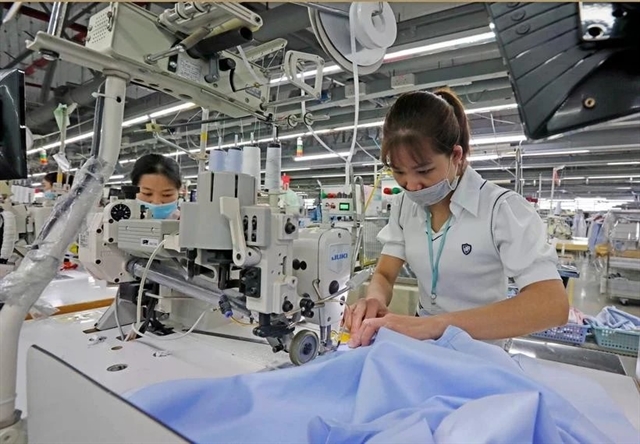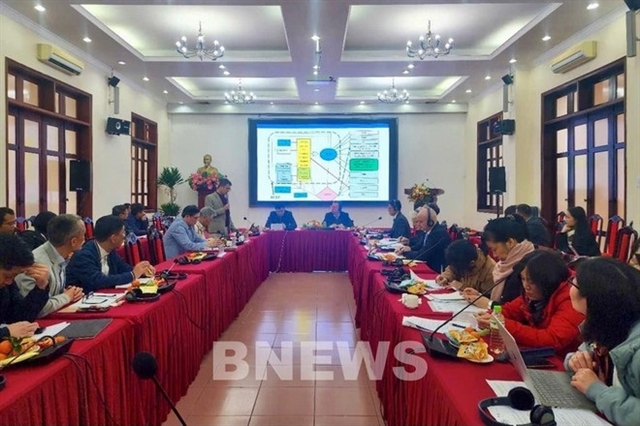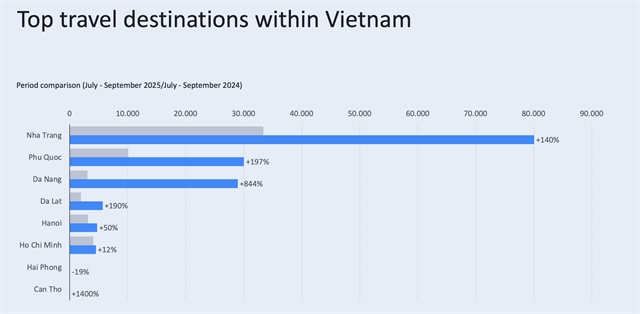 Economy
Economy

 |
| Workers make products for export to the EU. — VNA/VNS Photo |
HÀ NỘI — After five years of implementation, the EU-Vietnam Free Trade Agreement (EVFTA) has delivered many positive outcomes, according to a report released by the Central Institute for Economic Management (CIEM) on February 24.
Presenting the report titled “Vietnam After Five Years of Implementing the EU-Vietnam Free Trade Agreement (EVFTA): Achievements, Challenges and Policy Reform Directions,” Nguyen Anh Duong, Head of the General Research Department at the CIEM, pointed out remarkable results, including a robust growth of Vietnamese exports to the EU, particularly in key sectors such as textiles, footwear, and agro-fishery products which benefit significantly from tariff incentives.
The EVFTA has created a transparent business environment, attracting high-quality foreign direct investment (FDI) from the EU, especially in high-tech and sustainable development sectors. Commitments related to intellectual property, environmental protection, labour, and sustainable development under the agreement have encouraged Việt Nam to upgrade its legal framework to align with international standards.
Specifically, the proportion of exports to the EU in Vietnam's total export turnover has gradually increased, reaching 13.19% in 2024. Việt Nam maintains a substantial trade surplus with the EU, with US$35.2 billion last year, the highest among the free trade agreements to which the Southeast Asian nation is a signatory. Notably, the rate of utilising tariff preferences under the EVFTA rose from 14.8% in 2020 to 35.2% in 2023.
 |
| At the launch of the report titled “Vietnam After Five Years of Implementing the EU-Vietnam Free Trade Agreement (EVFTA): Achievements, Challenges and Policy Reform Directions." — VNA/VNS Photo |
Regarding FDI, the EVFTA has attracted significant interest from EU investors, particularly in high-tech, renewable energy, and green manufacturing sectors. However, the actual inflow of FDI from the EU has not increased as expected.
In terms of institutional reform, the EVFTA has served as a crucial catalyst for Việt Nam to adjust its policy and legal systems to meet high standards in trade, investment, and sustainable development. Key changes are seen in areas such as customs process transparency, business environment improvement, labour standards enhancement, and environmental protection.
Nonetheless, implementation faces challenges due to uneven enforcement capacity among ministries and localities, as well as difficulties in adjusting the legal framework to meet new requirements.
On sustainable development, the EVFTA has prompted Việt Nam to adopt higher standards regarding environmental protection, labour, and corporate administration, steering the country toward more sustainable practices.
Duong explained that the utilisation rate of tariff preferences remains low, as many enterprises struggle to meet stringent rules of origin. Additionally, Vietnamese enterprises, especially small and medium-sized enterprises (SMEs), need to be better prepared to seize the opportunities presented by the deal.
He emphasised that the report recommends several important policy actions to optimise the EVFTA, including ongoing reviews and adjustments of the legal framework to ensure effective implementation. The approach should focus on strengthening cooperation between Việt Nam and the EU in reforming regulations to align with emerging trends, particularly in new technologies and sustainable development. — BIZHUB/VNS




